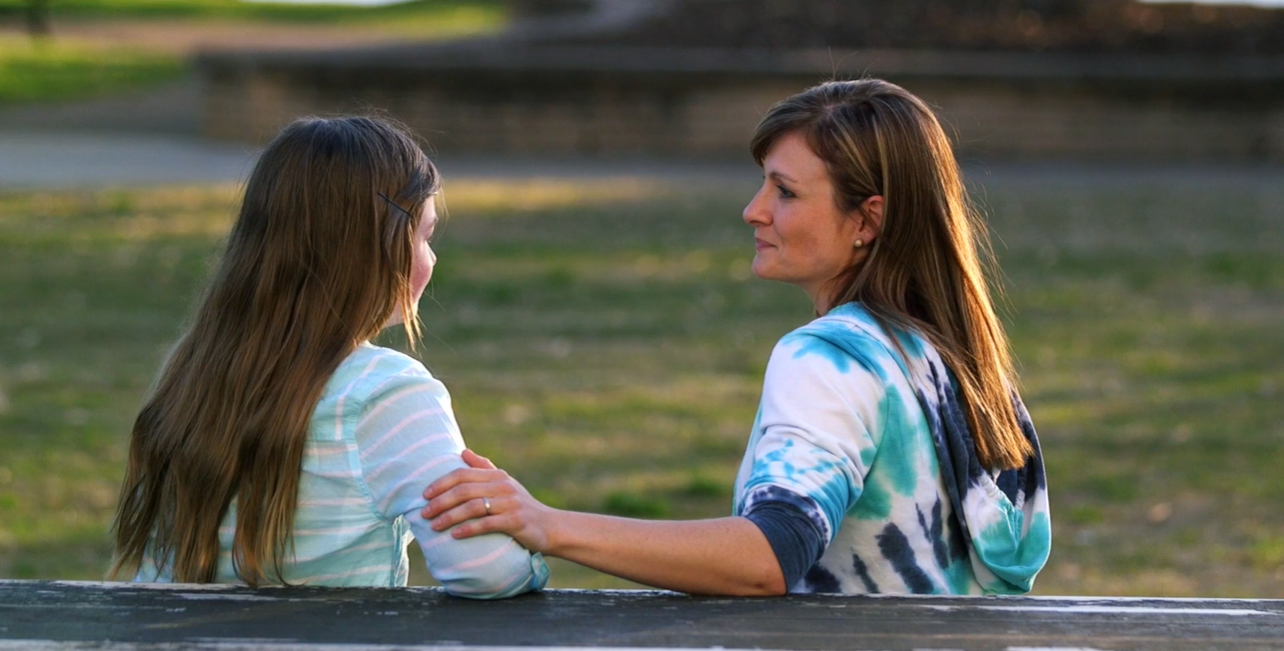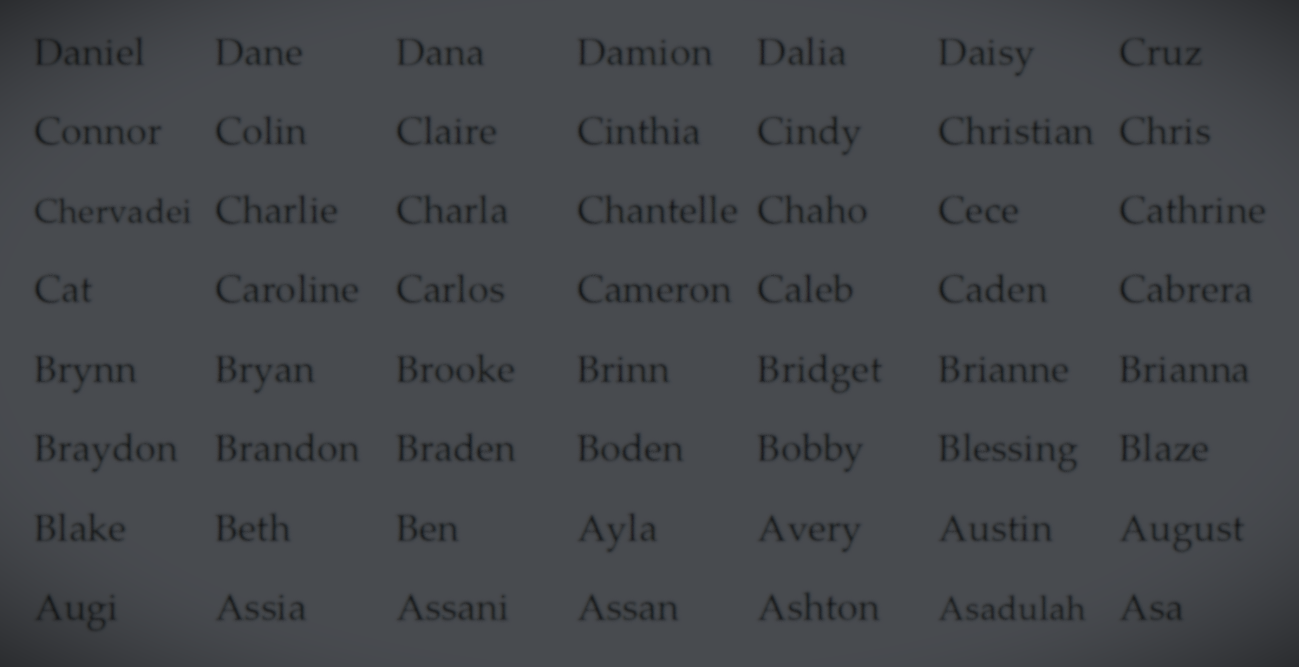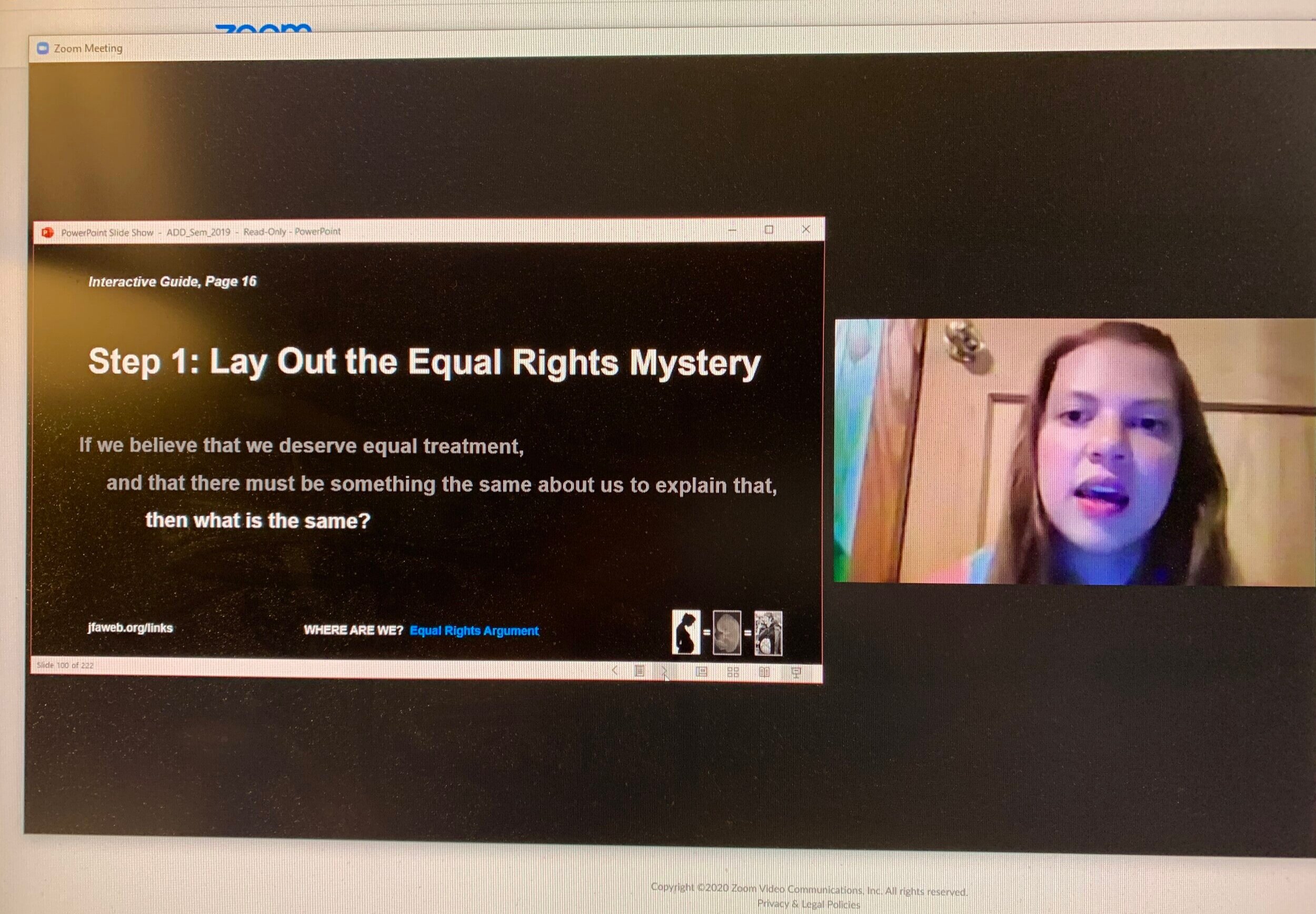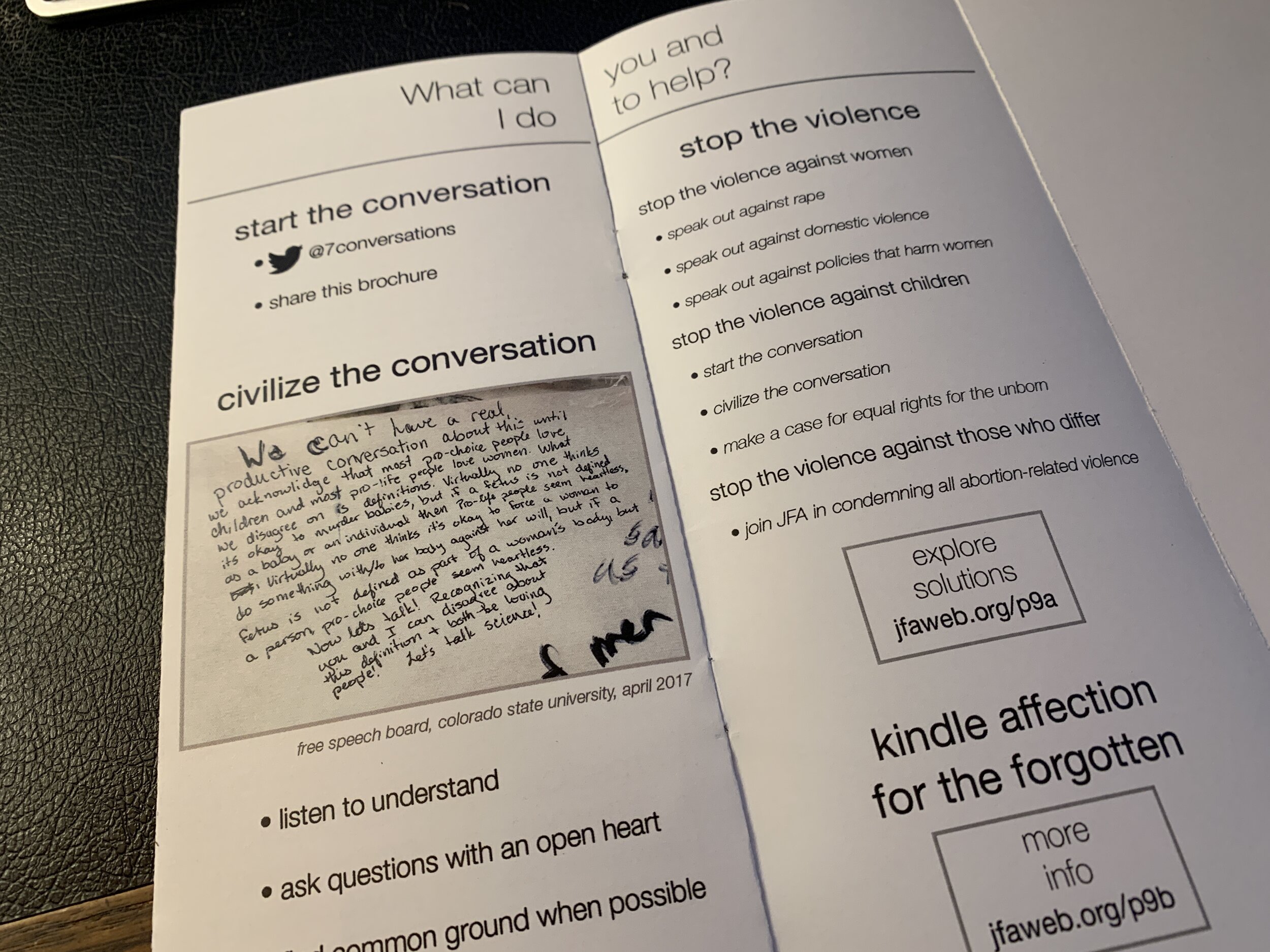“I had never spoken to my friend about abortion…”
Dear Friend of JFA,
JFA Training Specialist Kaitlyn Donihue is shown during a “7 Conversations in 7 Hours” Zoom workshop, teaching participants from all over the country to make a clear case for the equality of the unborn. See the end of this blog post for newly-added workshop dates - Register here.
More than 70 people have participated in our “7 Conversations in 7 Hours” workshops since we began offering them six weeks ago. (New dates have been added. See below!)
At the conclusion of each hour-long Zoom session, we challenge participants to start a conversation using what they’ve learned during that hour. Elizabeth, a participant from Florida, wrote to us after Session Four:
I had never spoken to my friend, T, about abortion, so when I asked her stance she immediately went into her personal story. As a pregnant 16 year old she’d had an initial consultation and scheduled [an] appointment for a saline abortion at 6 months pregnant. She said everyone assumed that’s what she should do and in response to their reactions, she [scheduled the appointment] but had not yet told her mother. The baby’s father came to her house one day saying his sister wanted to speak with her. They spoke on the phone and the sister told her not to abort the baby, that it was a “living baby” and not to worry, that things would work out and offered her help such as babysitting and a place to live.
The panel shown above, part of JFA’s “Stop and Think” exhibit, features a fetus at 18 weeks old (from fertilization). This is the age of the unborn around the beginning of the 6 month of pregnancy (the same stage of pregnancy when Elizabeth’s friend, T, had first scheduled an abortion appointment).
T told me then “that was the first time it had ever occurred to me that it was a baby. His sister talked about it in a way that showed she cared.” The sister also urged her that if she had an abortion it would be a big regret. She decided then and there against the abortion and had the courage to tell her mom that she was pregnant. Her mother was upset about the pregnancy and even more about her unwillingness to abort but after some time she came around to the idea and gladly helped prepare for the baby’s arrival. That baby is now 30 years old and a successful, independent young man.
So, following that story I asked about her general views on abortion. She stated she’s firmly pro-life. I went through the science of the unborn, establishing the biological citizenship of the growing baby to the human family. She agreed with the various statements as I laid out those points as well as the points of the baby having equal rights. When asked if there was any situation in which she would believe an abortion is warranted, she stated the rape exception.
Since we have yet to cover that topic, I found common ground in agreeing that it would be a horrible situation for the mother and she deserves care and justice. I also went back to the previous points asking if the baby conceived in rape is any less human or any less deserving of equal human rights. She acquiesced that indeed, it is not any less.
Notice how Elizabeth was able to help T even though T’s specific concern about rape was not to be covered until the next week of the online workshop series. Elizabeth used the skills she had learned already to help T think through the case of rape. (Indeed, because T is Elizabeth’s friend, Elizabeth can also go back to her to discuss some of what we covered in Session Five.)
Elizabeth’s friend T needed help when she became pregnant, and even though some in the family disagreed, T’s boyfriend’s sister spoke up. She offered reasons to think the unborn was a human being, and she offered practical help. This illustrates why we are emphasizing with each of the participants in our online workshops the importance of creating conversations.
Note also, though, how even in her passion for unborn children, T hadn’t yet connected the dots for unborn children produced through rape. Once Elizabeth was willing to do the uncomfortable work of creating a conversation with T, it became clear quickly that they had only a small disagreement, and Elizabeth was able to help T think more clearly. Reading Elizabeth’s account, I’m struck by how the conversation seems so natural, even as the friends discussed their disagreements. Let’s pray for Elizabeth as she continues the conversation with T, and let’s pray that T will have opportunities to speak to others. Perhaps T will even join us for our next “7 Conversations in 7 Hours” series, beginning on July 20! You can, too, and you can invite a friend!
Thank you for partnering with us to train more advocates to create a different kind of conversation, one that ministers to hearts and changes minds.
- Steve Wagner, Executive Director
“I am not an articulate person and definitely avoid anxiety-producing situations of talking to someone who might disagree with me. But because of the course and the website I now have a resource...to help me to know what to say, and most importantly how to say it.
”














